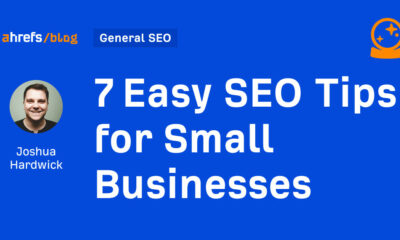Consumer data collection has exploded over the past decade. As users, we’ve grown too accustomed to sharing very personal data in this loosely regulated digital age through every topic searched, email sent and double-tap on a friend’s post. All these signals build a rich profile for targeting and personalization.
Data-driven marketing has had a transformational shift not only in how we engage with our customers but, even more importantly, in how we target new prospective customers. But for many, this new era of ultra-sophisticated audience-based targeting is begging more questions than the martech industry can answer. Most pointedly, is today’s reliance on data-driven targeting becoming a surveillance state?
This recent backlash led to California’s Consumer Privacy Act (CCPA) which went into effect in 2018. More states have since followed, giving them more control over what personal data can be collected, brokered and used for marketing.
Dig deeper: Why marketers should care about consumer privacy
Sensible vs. sensitive data targeting
As marketers, it’s more imperative than ever to respect a person’s privacy and still utilize all the available data responsibly to create personal ad experiences. With little overall regulation, all types of data are at our fingertips to build cross-channel campaigns that can feel tailor-made for the user. It’s a fine line, though, on which ads will be met with delight and which ads will feel intrusive and even offensive.
As users of all this tech, we know all too well when marketers overstep. That line depends heavily on what’s being sold and how personal the marketer makes the ad experience. A gut check on your data strategies can quickly unveil how personal or behavioral data may inadvertently target a minority or potentially stigmatized group.
Suffice it to say, if you’re selling pet food, you can likely create some hyper-targeted and personalized ads without tripping the sensitivity trigger. On the other hand, if you’re targeting people with ailments, new or prospective moms or even plus-sized clothing buyers, it’s critical to take a close look at:
- What data is being used.
- How those audiences are modeled.
- How you’re differentiating your messaging to existing customers versus prospective buyers.
Since it’s never a cut-and-dry answer, here are four suggestions for navigating sensitive data.
1. Steer clear of potentially stigmatizing data
Ad targeting prospective customers based on ailment data, LGBTQ+ or racial background can put us in an all too obvious danger zone. However, it’s just as crucial to be aware of targeting audiences that could be stigmatizing or just too personal. Some more obvious examples of these audiences could include religion, political affiliation, mental health, military status or even data that reveal personal or financial hardship.
Martech platforms have removed the most sensitive audiences over the past few years. Yet, many ad targeting platforms still contain this data in less conspicuous derivations. For instance, you can no longer target by race in Meta’s properties but can still target BET Awards viewers.
One way to avoid crossing the line from sensible to sensitive targeting is to review the audiences Meta has removed over the past few years and see if any of your data strategies could touch a sensitivity nerve for your customer or prospect.
2. Data usage for customer vs. prospect targeting
Collecting data on your customers open all sorts of innovative and clever insights that can be used for targeting. With that comes the responsibility to use personal data carefully when building audiences and personalized recommendations.
They may be your customer, but be cognizant that some data-driven recommendations can be interpreted in a way that may make your customers uncomfortable or even find offensive.
A big-box retailer learned this the hard way when they relied too heavily on programmatically generated ads and inadvertently served personalized ads for weight-loss products to plus-size apparel buyers. No surprise that the backlash was swift. Be aware of how you use data across the customer journey to avoid inadvertently putting consumers on the back foot.
For prospect targeting, it’s even more critical to be judicious about how personally identifiable data is used. A good rule is to stay close to demographic and publicly available audience data.
As in life, it’s true in advertising that brands get one chance to make a good first impression. An overly personal ad with a new prospect can feel like a stranger asking or assuming more about the user than they are prepared to share.
Overstepping with new prospects will not only result in lower ad engagement but can quickly trigger a negative brand bias that will be a long road to winning that trust back.
Get MarTech! Daily. Free. In your inbox.
3. Be clear about why you’re collecting data
It’s always a good idea to be open with both your customers and prospects on:
- What is the benefit to them of sharing their information with you.
- How you plan to protect and use their data.
Consumers are wise to data usage now. It’s crucial to let them know if the data will only be used for product recommendations or for tailored ads and/or personalization. Most importantly, if you utilize a retailer or data cooperative, let consumers know that portions of their data may be shared with other similar marketers for products and services they may be interested in.
A critical piece of data collection is also giving your customers an easy way to opt out of having their data used for some or all of the marketing services.
Dig deeper: Going beyond cookie consent: 3 strategies to achieve data compliance
4. Don’t forget traditional data gathering
With the deprecation of third-party cookies and ever-evolving restrictions on data sharing for iOS devices, it’s even more essential now to look to tried-and-true ways to capture user data.
Whether it be collecting email addresses at checkout or developing a rich content strategy for your brand that incentivizes your customers or prospective customers to subscribe to ‘member only’ content or newsletters.
Another way to gather new data is to work with other brands that have a high customer affinity for your brand and build second-party data assets to send direct mail or target across display or social media where the likelihood of them engaging with your brand and ideally purchasing is higher than off the shelf audience selections.
A great example of this is seeing premium fitness brands including Lulu Lemon, and even boutique brands like Vuori, partner with Equinox to merchandise and market their products with luxury-minded fitness consumers.
Maximize your ad targeting strategy without overstepping
Audience-driven targeting is ever-evolving. The data scientist that gave us the early tools to do data-driven targeting relied on complex programmatic data modeling with the promise to reach people with the right product, at the right time with the right message.
What we’ve learned since is that while this promise may finally be possible, it’s up to us to decide which of those levers to pull and which ones to push back so we don’t overstep and always keep our marketing and messaging securely in the comfort zone of our customers.
Opinions expressed in this article are those of the guest author and not necessarily MarTech. Staff authors are listed here.

































You must be logged in to post a comment Login